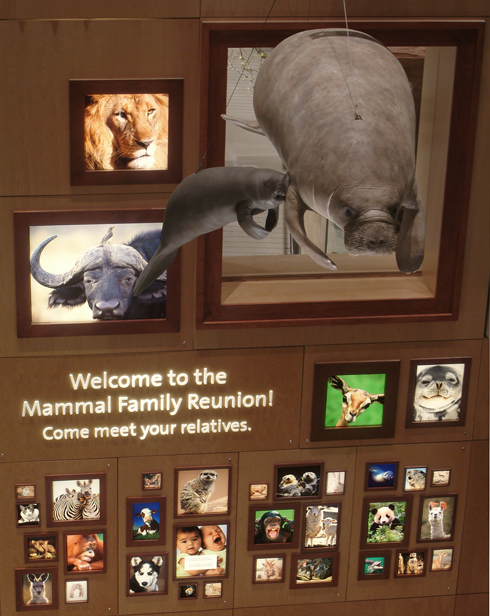Note: This is a revision of an earlier version of this post.
As an adjunct professor in John F. Kennedy University’s graduate program in museum studies, professional development is frequently at the front of my mind.
By “professional development,” I mean helping students and emerging museum professionals become more thoughtful museum thinkers and makers. I’m talking about learning to think more critically and creatively about both one’s niche within the museum world and the larger system of the museum (or museums). Much of the writing on museum theory and practice can contribute, of course, to professional development, but no number of how-to articles or books contextualizing contemporary museum exhibitions and programming is sufficient in itself.
The difference between learning how to do something in a museum context and developing oneself professionally within the museum field is frequently vast. It’s the difference between reading an article on how to grow tomatoes (and subsequently planting tomatoes) and reading a book like Food Not Lawns and planning a suburban or urban garden that recycles resources via a system of ponds, swales, compost heaps, and seed preservation.
The most effective professional development takes place within systems and networks. In my experience, the best professional development frequently happens spontaneously, in the form of “a learning community assembling itself on the fly.” I borrow this phrase from Gardner Campbell’s talk for the University Continuing Education Association’s 2009 conference. Campbell emphasized the importance of catching a thought and pushing it along via conversations and networks–in Gardner’s example, by tweeting and retweeting on Twitter. “It’s a very playful way to interact,” Campbell said. “It’s purposeful, too. And you can’t control it. You shouldn’t try to shape it too narrowly. There are other things we can do for that. The term paper is not going away. The research project is not going away. . . Pushing the thought along actually lends a kind of vividness, a kind of energy, a sense of shared purpose to whatever you’re doing in a learning situation. It’s quite remarkable.”
I’m a bit embarrassed that I haven’t directly addressed this topic in previously in a blog post. I spend 40+ hours a week in the University of California, Davis, teaching center, trying to get faculty to be, in my mentor Jon Wagner’s phrase, more thoughtful about teaching undergraduates. I also help graduate students be more effective instructors, and I’ve founded a professional development consultancy. In short: I “do” professional development. I also teach museum studies graduate students, inculcating them into the field via an introductory history and theory seminar and by overseeing their master’s theses. I have quite a bit of experience and expertise in what works and what doesn’t in professional development in academic and nonprofit contexts; I’ve just never synthesized those experiences in writing.
In this post, I’m going to look at some best practices in professional development as well as look at the learning communities that are sprouting organically or intentionally from various social media platforms. By looking at these phenomena, I’m confident we can plot a more deliberate course–and yet one customized for each individual–for the professional development of our students, our colleagues, and ourselves.
Seven best practices in professional development
1. Professional development must be anchored to learning objectives. Professional development is not about “training” or just being polished and well-informed. A professional within the museum field is someone who can demonstrate knowledge of the field, yes, but also someone who is an experienced and open-minded learner, someone who
- cultivates broad networks within and across institutions,
- communicates well verbally or in writing,
- is a savvy and generous collaborator,
- exhibits an extraordinary degree of resourcefulness, and
- balances critical and creative thinking.
The challenge comes when we try to specify the desired outcomes of these objectives, when we translate them into behavioral objectives on a professional development plan. These behavioral objectives will vary depending on the individual’s interests, institutional needs, and the size, focus, and scope of the museum.
For example, specific and measurable learning objectives in a year-long professional development plan as stated by an emerging museum professional who is in education at a small textiles museum but who has an interest in moving into curation at some point in the future might include:
- Determine which research emphases textiles are in demand (either at her museum or in the field more broadly), pick one, and read at least six books and exhibition catalogs, as well as multiple recent journal articles, on those textiles and the cultures producing them.
- Contact relevant journal editors and volunteer to write reviews of recent books of interest.
- Establish a collegial, and preferably a mentoring, relationship with an expert textile cleaner or restorer.
- Start a blog that educates laypeople about specific textiles’ origins, significance, and/or conservation. Curate a resource page of links to, and a bibliography of, materials on the subject.
- Attend a museum conference that textiles specialists are likely to attend.
- Join relevant associations or research groups in the museum field or textile industry.
- Research undergraduate courses and/or graduate programs that offer hands-on experience with textiles.
2. Conversations are essential to professional development. If you’re working at a small museum, you may find yourself without many people to talk to about what you’re working on. So, for example, if you’re a museum educator who is looking to find more thoughtful methods to interpret a new exhibition, you should be talking to someone who has interpreted an exhibit in a way that intrigued or inspired you, and engaging with the teachers who will be bringing their students to the museum. These aren’t just sound practices in exhibition interpretation; they’re opportunities for you to learn more about what’s going on in other museums and what teachers feel their students aren’t able to get from a traditional classroom experience.
3. Effective professional development stimulates more creative and critical thinking. By critical thinking, I mean analytical thinking, the ability to break down a scenario or information into its constituent parts and immerse oneself in studying and critiquing the details. By creative thinking, I mean synthesizing information from diverse sources to create something new and interesting. That means, of course, that the best professional development opportunities offer specific case studies for participants to study and address as well as particular problems for them to solve.
4. Professional development allows individuals to create their own networks by introducing them to network nodes in their areas of interest. A node is someone who is well-connected in their field or across disciplines or genres of museum participation. We all know people like this in our own workplaces, the people with 500 Facebook friends or 2,000 authentic followers on Twitter. These nodes draw on the expertise of their networks with a simple query via Twitter, blog, or e-mail, and connect individuals with one another.
5. The best professional development has both online and face-to-face components. Professional development is local and national and international. Museums should pool resources and collaborate with other institutions in their region for the mutual improvement of their staff members. We see this beginning to happen with the Balboa Park Cultural Partnership’s formation of the Balboa Park Learning Institute. Here’s a description of the project from the IMLS website:
The Balboa Park Cultural Partnership, a collaborative organization comprising 24 diverse museums and cultural institutions in San Diego, will establish the Balboa Park Learning Institute (BPLI). Over the three year project period, BPLI will design a professional development program targeted to the 2,500 professional staff members, 500 trustees, and 7,000 volunteer staff members in the park’s museums. As BPLI expands, the classes will be made available to museum colleagues and volunteers outside the park. BPLI will develop and present 66 workshops to build knowledge and skills in core museum competencies. Professional evaluation and assessment throughout the
project will prioritize learning needs and refine program delivery techniques. Three symposia will also be offered, bringing together
staff and volunteers from park institutions and beyond to learn about and discuss best practices in museum management and leadership.
Workshops and symposia should emphasize not just content coverage but conversations and connection. These connections and conversations can continue in an online forum, either one specifically set up to further the conversations started at the specific event or a more common tool like Twitter or Flickr.
The platform you choose is important. For example, in my experience, people aren’t going to contribute to a wiki set up for a one-time event, but they might visit a site that aggregates filtered content from their individual Twitter streams or blog feeds. (Select and promote a hashtag (e.g. #aam09) that people can use in their tweets or a tag to use in Flickr and on blogs.) If you have an ongoing project, a group blog or wiki (see, for example, the Smithsonian’s Web and New Media Strategy wiki) might be a better place for everyone to contribute. Or, you might partner with a forum like Museum Professionals to expand the learning that takes place at your professional development events beyond your institution(s) and encourage your participants to engage with professionals from outside your institution.
6. Professional development should be viral. In addition to finding a space for conversations to take place via forums, photo streams, or microblogging, arange in advance with museum blogs to have your staff write about your professional development event in guest posts on others’ blogs. In this way diverse but informed voices can join the conversation.
Similarly, if you missed a conference–say, the American Association of Museums conference or Museums and the Web–be sure to search Twitter for the appropriate hashtag, for example the 2009 AAM hashtag, #aam09. In such conference microblogging streams, you’ll find a wealth of information about what’s going on at the conference, links to conference content, and discussions taking place among attendees–which you should feel free to join in, even if you aren’t at the conference. Many times I’ve been at conferences where the conversations were enriched by people “attending” remotely via Twitter.
7. The best professional development makes space for evaluation. Let’s look back at our hypothetical emerging museum textiles professional in #1. How shall we go about evaluating the professional’s success in meeting her objectives? Measuring collegiality, for example, is difficult. This is a huge topic to address here, but you can expect to see it addressed in a future log post or in one of my museum professional development newsletters.
Ready for more professional development recommendations? Part II of this post, which will focus on social media, is coming soon.


